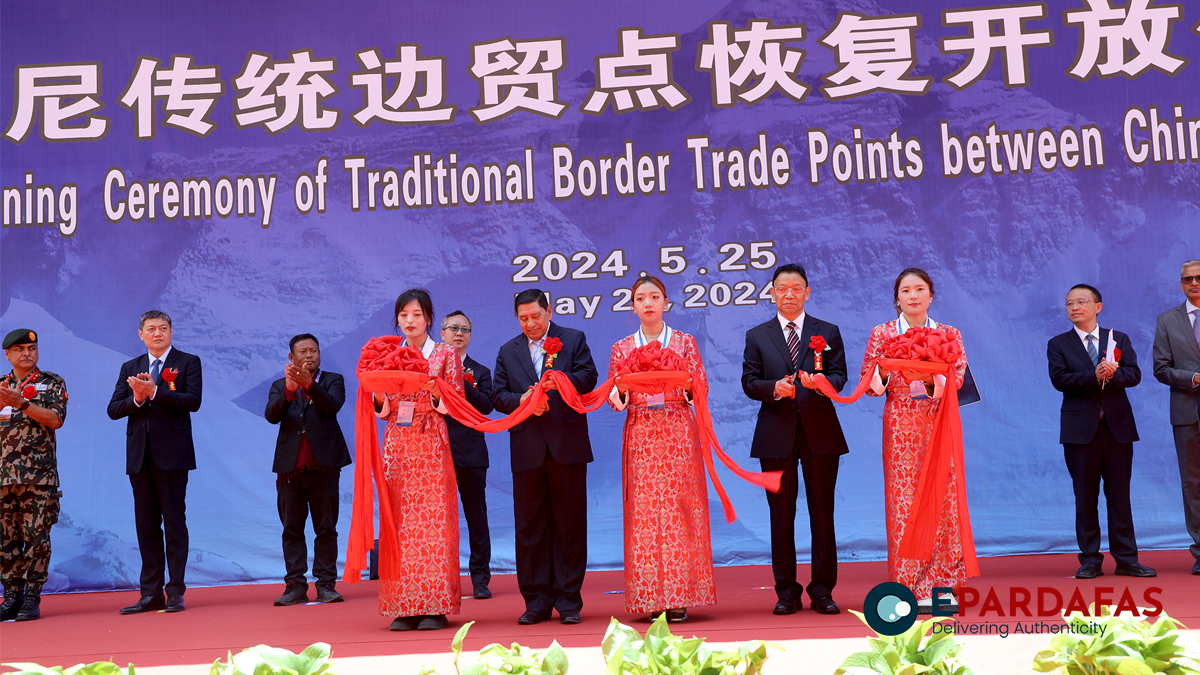Fourteen traditional border trade points connecting Nepal with its northern neighbor China, including the Kimathangka in Sankhuwasabha, have resumed operations today. These trade points were closed by the Chinese government in 2076 BS due to COVID-19 concerns.
Deputy Prime Minister and Minister for Foreign Affairs Narayan Kaji Shrestha, along with Vice President of the Tibet Autonomous Region Silang Nima, announced the reopening of these trade points during an event held today in Chhentang, China.
Speaking to media persons at Tumlingtar Airport in Sankhuwasabha, DPM Shrestha confirmed that the official reopening of these traditional border transit points was announced today. He specified that seven checkpoints are now operational, with the remaining seven to reopen soon.
The reopening of these 14 trade points, including Kimathangka, comes after continuous diplomatic efforts by the Nepalese government. DPM Shrestha highlighted that the decision to resume operations was made during his official visit to China in March, where both sides agreed on this significant move.
DPM Shrestha was accompanied by Chief Minister of Koshi Province Hikmat Kumar Karki, joint secretaries from the Ministry of Home Affairs and the Ministry of Foreign Affairs, the Chief District Officer, and the chief of the district security agency during the announcement event.
The reopening of the Kimathangka border point has brought excitement to the locals of Bhotkhola, who previously relied on this route to import food and other necessities from nearby Chinese markets. The customs office at Kimathangka was originally established in 2035 BS but was moved to Khandbari in 2057 BS due to the decade-long armed conflict in Nepal.
Kimathangka is located 162 km from the district headquarters, Khandbari, making it a crucial trade point for the local economy. The resumption of operations is expected to boost local trade and provide much-needed economic relief to the residents.
The reopening of these border trade points marks a significant step towards restoring traditional trade routes and enhancing economic ties between Nepal and China. The collaborative efforts of both governments underscore the importance of these transit points in fostering regional trade and development.



Comments